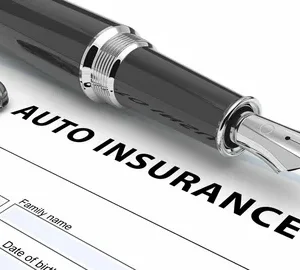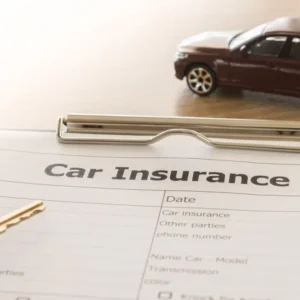Car insurance requirements vary wildly from coast to coast—and if you’re driving across state lines, it pays to know exactly what “minimum coverage” means in your home state (and any place you plan to visit). In this deep-dive essay, we’ll peel back the curtain on state-by-state minimum liability limits, compare the highest and lowest thresholds, explore what these numbers really mean in an accident, and share actionable tips to keep you both legal and properly covered.
Whether you’re a new driver or a longtime policyholder, understanding these requirements will help you avoid fines, license suspensions, and—even worse—financial exposure in the event of a crash.
Car Insurance Minimums: Understanding the Basics
Before we jump into state comparisons, let’s level-set on the three core minimums you’ll see in nearly every state:
- Bodily Injury Liability (BI)
- Per person limit (e.g., $25,000)
- Per accident limit (e.g., $50,000)
- Property Damage Liability (PD)
- Per accident limit (e.g., $25,000)
- Additional Coverages (where required)
- Personal Injury Protection (PIP)
- Uninsured/Underinsured Motorist (UM/UIM)
- Medical Payments (MedPay)
At a minimum, these liability coverages kick in when you’re at fault in an accident, paying for the other party’s medical bills, legal fees, and vehicle repairs. If you drop below your state’s minimums, you risk hefty fines, license suspension, and out-of-pocket bills—even bankruptcy if damages exceed your coverage limits.
State-by-State Breakdown of Minimum Requirements
Below is a snapshot of each state’s minimum liability thresholds. (For a downloadable, printable version, see the Insurance Information Institute’s full table.)
Note on California: As of January 1, 2025, California’s minimum limits jump to $30,000/$60,000/$15,000 under Senate Bill 1107 to address rising repair costs—up from the former $15K/$30K/$5K minimums.
| State | BI per Person | BI per Accident | PD per Accident |
|---|---|---|---|
| Alabama | $25,000 | $50,000 | $25,000 |
| Alaska | $50,000 | $100,000 | $25,000 |
| Arizona | $25,000 | $50,000 | $15,000 |
| Arkansas | $25,000 | $50,000 | $25,000 |
| California† | $30,000 | $60,000 | $15,000 |
| Colorado | $25,000 | $50,000 | $15,000 |
| Connecticut | $25,000 | $50,000 | $25,000 |
| Delaware | $25,000 | $50,000 | $10,000 |
| D.C. | $25,000 | $50,000 | $10,000 |
| Florida | — | — | $10,000* |
| Georgia | $25,000 | $50,000 | $25,000 |
| Hawaii | $20,000 | $40,000 | $10,000 |
| Idaho | $25,000 | $50,000 | $15,000 |
| Illinois | $25,000 | $50,000 | $20,000 |
| Indiana | $25,000 | $50,000 | $25,000 |
| Iowa | $20,000 | $40,000 | $15,000 |
| Kansas | $25,000 | $50,000 | $25,000 |
| Kentucky | $25,000 | $50,000 | $25,000 |
| Louisiana | $15,000 | $30,000 | $25,000 |
| Maine | $50,000 | $100,000 | $25,000 |
| Maryland | $30,000 | $60,000 | $15,000 |
| Massachusetts | $20,000 | $40,000 | $5,000 |
| Michigan | $20,000 | $40,000 | $10,000 |
| Minnesota | $30,000 | $60,000 | $10,000 |
| Mississippi | $25,000 | $50,000 | $25,000 |
| Missouri | $25,000 | $50,000 | $25,000 |
| Montana | $25,000 | $50,000 | $20,000 |
| Nebraska | $25,000 | $50,000 | $25,000 |
| Nevada | $25,000 | $50,000 | $20,000 |
| New Hampshire | $25,000 | $50,000 | $25,000 |
| New Jersey | $25,000 | $50,000 | $25,000 |
| New Mexico | $25,000 | $50,000 | $10,000 |
| New York | $25,000 | $50,000 | $10,000 |
| North Carolina | $30,000 | $60,000 | $25,000 |
| North Dakota | $25,000 | $50,000 | $25,000 |
| Ohio | $25,000 | $50,000 | $25,000 |
| Oklahoma | $25,000 | $50,000 | $25,000 |
| Oregon | $25,000 | $50,000 | $20,000 |
| Pennsylvania | $15,000 | $30,000 | $5,000 |
| Rhode Island | $25,000 | $50,000 | $25,000 |
| South Carolina | $25,000 | $50,000 | $25,000 |
| South Dakota | $25,000 | $50,000 | $25,000 |
| Tennessee | $25,000 | $50,000 | $25,000 |
| Texas | $30,000 | $60,000 | $25,000 |
| Utah | $25,000 | $65,000 | $15,000 |
| Vermont | $25,000 | $50,000 | $10,000 |
| Virginia | $30,000 | $60,000 | $20,000 |
| Washington | $25,000 | $50,000 | $10,000 |
| West Virginia | $25,000 | $50,000 | $25,000 |
| Wisconsin | $25,000 | $50,000 | $10,000 |
| Wyoming | $25,000 | $50,000 | $20,000 |
† California’s new minimums take effect January 1, 2025 under SB 1107.
* Florida requires only PD and PIP; BI liability is not mandatory.
Data courtesy of the Insurance Information Institute’s July 2024 report and state DMVs.
Key Comparisons and Insights
- Nationwide Averages
- BI per person: ~$25,000
- BI per accident: ~$50,000
- PD: ~$15,000–$25,000
Most states cluster around 25/50/25, but you’ll find exceptions at both ends: Alaska’s BI of 50/100 and New Jersey’s additional PIP/UM requirements push its baseline higher, while Florida’s minimal PD/PIP setup sits uniquely low on BI.
- Regional Patterns
- West Coast: California’s jump to 30/60/15 brings it closer to Pacific neighbors Oregon (25/50/20) and Washington (25/50/10).
- Midwest: Generally consistent 25/50/25, with Minnesota demanding extra PIP/UM.
- Northeast: Mixed bag—Massachusetts (20/40/5) vs. New York (25/50/10) vs. New Jersey’s PIP/UM combo.
- South: Florida’s PIP focus contrasts sharply with Texas (30/60/25) and Georgia (25/50/25).
- Emerging Trends
- Several states are considering higher minimums to keep pace with inflation in medical and repair costs.
- Uninsured Motorist coverage is increasingly mandatory, especially in states with high hit-and-run rates (e.g., Michigan, New York).
What You Must Know to Stay Legal and Covered
Merely meeting state minimums can leave you under-protected. Consider these factors before locking in a policy:
- True Cost of Accidents
- Medical bills for a single injury often exceed $30,000.
- Repairing newer vehicles can easily top $10,000.
- Your Assets at Risk
- If damages exceed your limits, you’re personally responsible for the difference.
- High-net-worth individuals should bump liability to 100/300/100 or higher.
- State-Specific Pitfalls
- Florida drivers: Only PD/PIP required—BI gaps can be disastrous if you cause injury.
- New Hampshire: You can “self-insure” but must prove assets of at least $25,000/$50,000/$25,000.
- Beyond the Minimum:
- Collision & Comprehensive: Pay for your own vehicle’s repairs.
- Uninsured/Underinsured Motorist: Shields you when the at-fault driver skates without coverage.
- Medical Payments (MedPay) or PIP: Covers your bills immediately, regardless of fault.
Tips to Optimize Your Coverage
- Shop Around Every Year
- Rates can vary by hundreds of dollars.
- Bundle home and auto for multi-policy discounts.
- Raise Your Deductibles
- Higher deductibles lower premiums—just make sure you can afford the out-of-pocket cost.
- Maintain a Clean Driving Record
- Even one speeding ticket can spike your premium.
- Take defensive-driving courses for discounts.
- Leverage Usage-Based Programs
- If you drive under 10,000 miles/year, telematics programs can offer steep savings.
- Ask About State Assistance
- California and New York offer low-income assistance programs to help cover minimums.
Conclusion
Navigating the maze of state car insurance minimums might feel daunting, but a little research goes a long way. Meeting—but preferably exceeding—your state’s minimums ensures you stay on the right side of the law and safeguard your financial future. Bookmark this guide, compare quotes annually, and consider stepping up your coverage before a costly accident forces your hand.
Ready to find the policy that fits your needs? Start by checking rates from at least three reputable insurers, plug your numbers into a comparison tool, and remember: the cheapest policy isn’t always the smartest choice. Stay informed, stay covered, and drive with confidence.
Enjoyed this breakdown?
👉 Subscribe for more insurance insights and personal-finance tips.
👉 Share this post with friends or family who might be under-insured.






